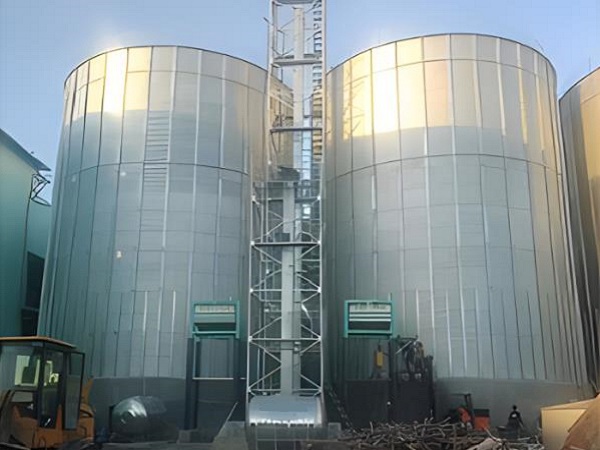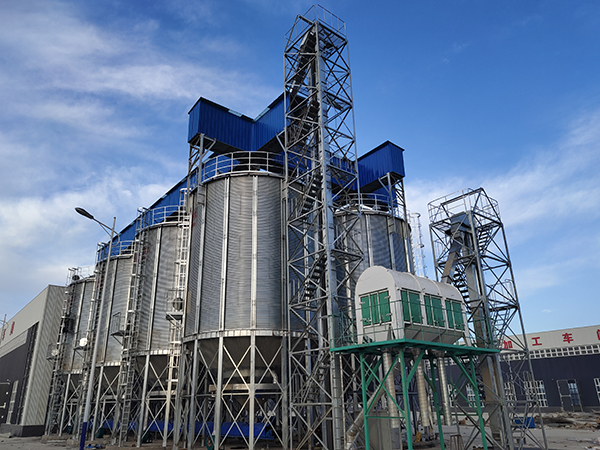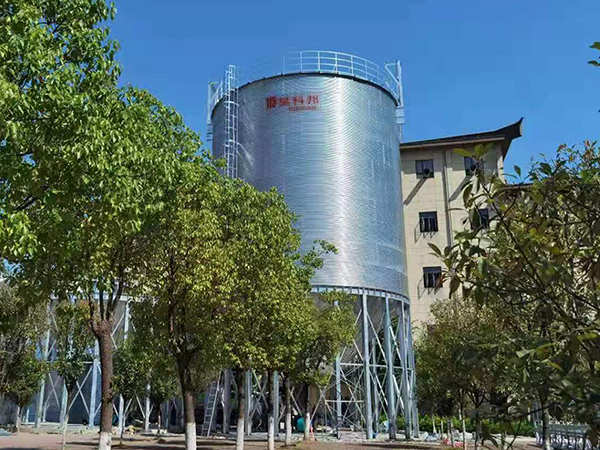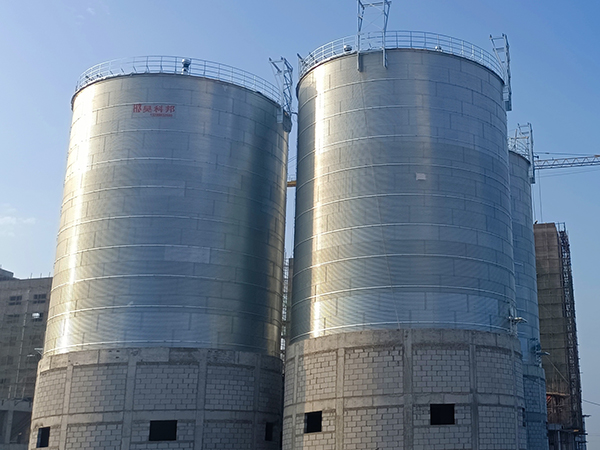cattle feed silo
cattle feed silo is a facility used for storing and managing cattle feed. It is typically a closed cylindrical structure capable of storing large quantities of feed such as grains
cattle feed silo Introduction
A cattle feed silo is a facility used for storing and managing cattle feed. It is typically a closed cylindrical structure capable of storing large quantities of feed such as grains, silage, hay, etc. These silos are usually designed robustly to ensure the safety and preservation of the feed while also allowing for easy access and management. The design of cattle feed silos can be adjusted according to the needs and scale of the cattle farm to meet different farming requirements.
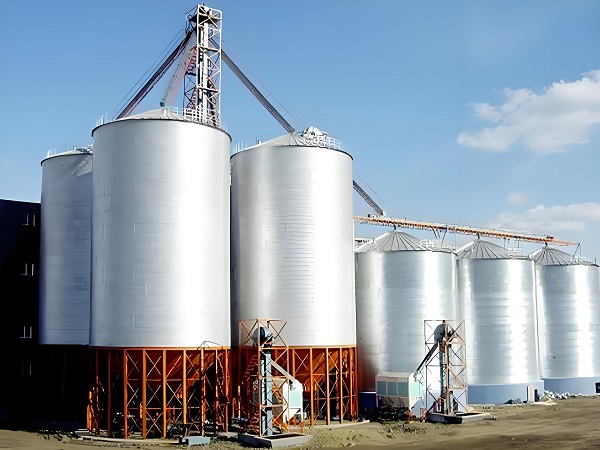
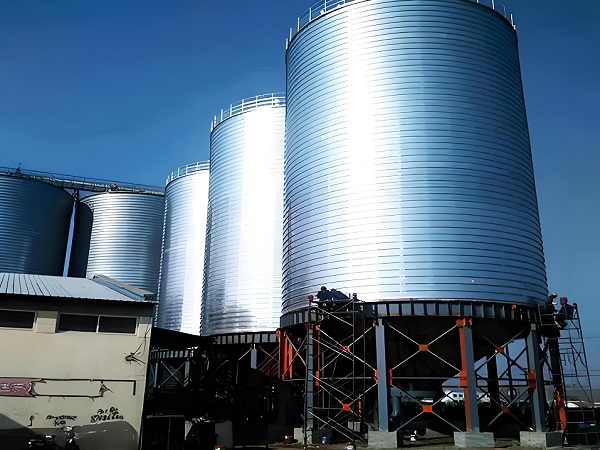
Characteristics of cattle feed silo
Large capacity
Cattle feed silos typically have a large capacity, allowing for the storage of a significant amount of feed to meet the needs of the herd.
Strong enclosure
Silos are usually enclosed structures that effectively protect feed from external environmental influences, ensuring the quality and preservation of the feed.
Robust construction
To withstand weight and external pressures, cattle feed silos are often constructed using sturdy materials and designs to ensure stability and safety.
Convenient management
Cattle feed silos are designed for easy management and use, often featuring appropriate inlet and outlet ports for easy access and distribution of feed.
High adaptability
The design of silos can be adjusted according to the scale and requirements of the cattle farm to meet the needs of different-scale farming.
Improved efficiency
Cattle feed silo efficiently organize and manage feed, contributing to higher feed utilization rates and farming efficiency.
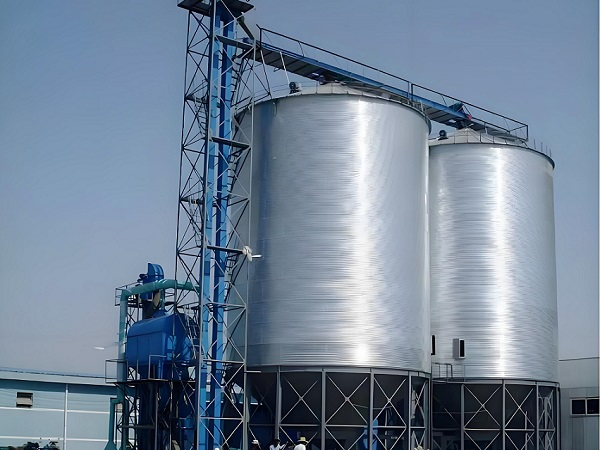
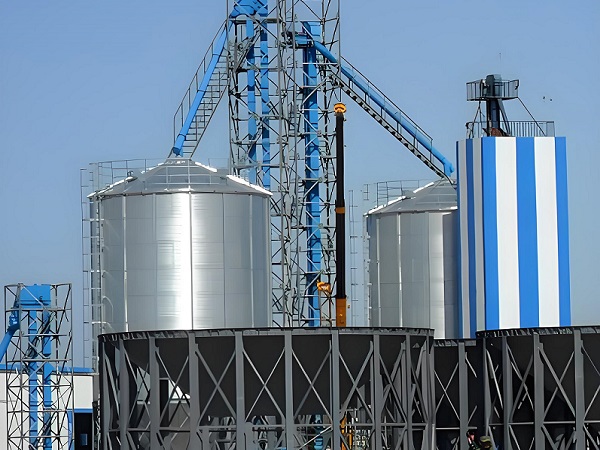
Structure of cattle feed silo
Silo body
The main part of the silo, usually a cylindrical or conical structure, used to contain and store feed.
Inlet port
Used to convey feed into the silo. The inlet port is typically located at the top or side of the silo and allows for loading feed into the silo either through conveyor equipment or manually.
Outlet port
Used to withdraw feed from the silo. The outlet port is usually located at the bottom of the silo and allows for the removal of feed either through conveyor equipment or manually.
Supporting structure
Used to support and stabilize the frame of the silo, typically made of metal or concrete to ensure the stability and safety of the silo.
Sealing device
Used to ensure the silo’s seal, preventing the influence of external environmental factors on the feed. This often includes sealing doors, gaskets, and other components.
Auxiliary equipment
Including conveying equipment, mixers, temperature and humidity control systems, etc., used to facilitate loading, unloading, and management of feed, as well as maintaining feed quality and preservation.
These parts together constitute the overall structure of a cattle feed silo, ensuring the safe storage and effective management of feed.
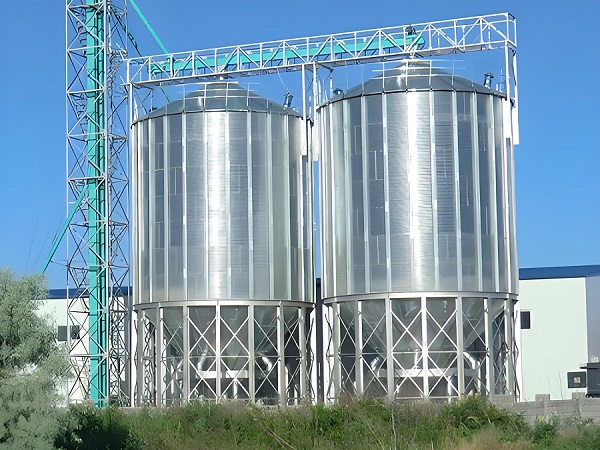
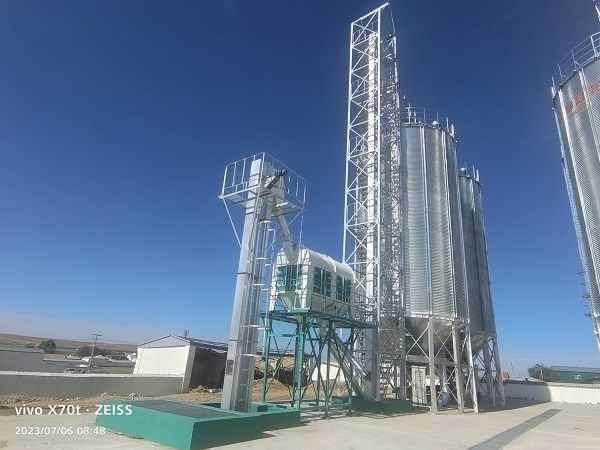
Advantages of Cattle Feed Silo
Efficient storage
Silos can accommodate a large quantity of feed, providing efficient storage space to meet the long-term feed requirements of cattle.
Good preservation
Silos are typically sealed structures, effectively preventing feed from moisture, mold, or other environmental influences, thereby maintaining the freshness and quality of the feed.
Convenient management
Cattle feed silo are designed with rationality, equipped with facilities such as inlet and outlet ports, facilitating the loading, unloading, and management of feed, thus improving feed utilization efficiency.
Space-saving
The vertical structure design of silos efficiently utilizes space, especially suitable for limited areas or situations requiring centralized storage of large quantities of feed.
Strong adaptability
Cattle feed silo can be custom-designed according to the scale and requirements of the farm, capable of meeting the needs of different scales and types of farming operations.
Reduced wastage
With feed stored in sealed silos, wastage and losses are minimized, enhancing the economic efficiency of feed utilization.
Overall, cattle feed silo offer many advantages such as efficiency, convenience, space-saving, and economic benefits, making them one of the essential facilities in modern cattle farming.
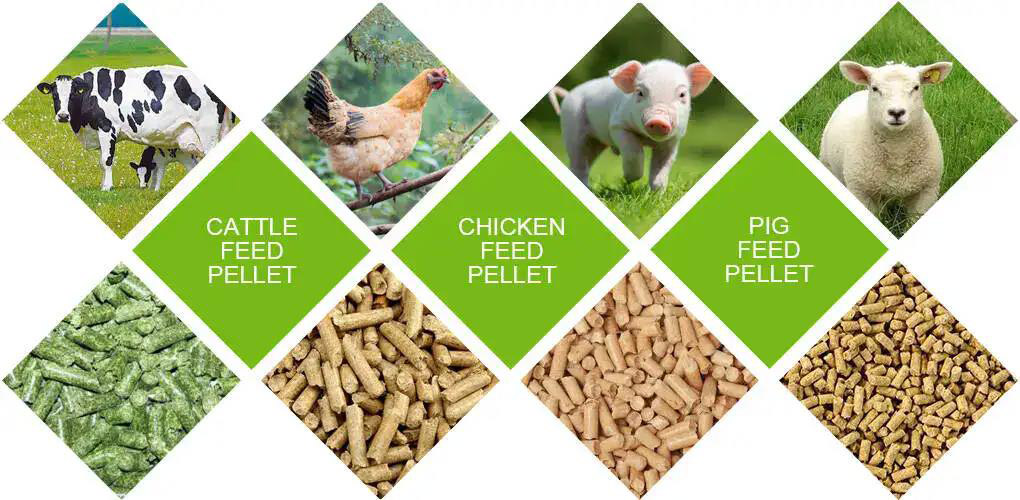
Cattle Feed Silo Applications
Farms and ranches
Cattle feed silo are commonly used in farms and ranches to store and manage daily feed for cattle, such as grains, silage, hay, etc. These silos can be designed according to the scale and requirements of the farm to meet the needs of different-scale farming.
Farms and agricultural cooperatives
Farms and agricultural cooperatives also use cattle feed silos to store feed for livestock. These farms typically need to store large quantities of feed to meet the needs of various livestock.
Feed processing plants
Feed processing plants typically use cattle feed silos to temporarily store raw materials or finished feed. These silos help manage and organize large quantities of feed to ensure the continuous operation of the production line.
Livestock product processing plants
Some livestock product processing plants may also use cattle feed silos to store and manage processed feed products for future sale or distribution.
Veterinary clinics and animal health centers
In veterinary clinics and animal health centers, cattle feed silos can be used to store medications and special feed to meet the specific needs of cattle, such as nutritional supplementation or medication.
Overall, cattle feed silo play an important role in various aspects of the livestock industry, helping to manage and ensure the supply of feed for cattle, and improving the efficiency and quality of livestock production.
Cattle feed silo technical parameters
Scientifically speaking, the Silo capacity should be measured with volume (m3). Even in the same grain Silo, the storage tons will be different for different grains with different densities. The following table is calculated based on a Silo density of 0.75kg/m3, and surely HKB customizes Silo systems unique for you.
| Most Popular Hopper Bottom Steel Silo Technical Specifications | ||||||||
| Capacity | 50Ton | 100Ton | 150Ton | 200Ton | 300Ton | 500Ton | 1000Ton | 1500Ton |
| Model | TCZK
03605 |
TCZK
04507 |
TCZK
05507 |
TCZK
06406 |
TCZK
07307 |
TCZK
07313 |
TCZK
11010 |
TCZK
12811 |
| Diameter(m) | 3.667 | 4.584 | 5.500 | 6.417 | 7.334 | 7.334 | 11.000 | 12.834 |
| Total Height(m) | 9.56 | 12.53 | 13.25 | 12.85 | 14.70 | 21.42 | 20.95 | 23.51 |
| Volume(m³)
Density:0.75ton/m³ |
69 | 150 | 222 | 273 | 415 | 699 | 1346 | 2039 |
| Most Popular Flat Bottom Steel Silo Technical Specifications | ||||||||
| Capacity | 1000Ton | 1500Ton | 2000Ton | 2500Ton | 3000Ton | 5000Ton | 8000Ton | 10000Ton |
| Model | TCK
10014 |
TCK
11915 |
TCK
13715 |
TCK
15514 |
TCK
15518 |
TCK
18321 |
TCK
24718 |
TCK
25621 |
| Diameter(m) | 10.084 | 11.918 | 13.750 | 15.584 | 15.584 | 18.334 | 24.751 | 25.668 |
| Total Height(m) | 18.69 | 20.34 | 20.87 | 20.30 | 24.78 | 28.60 | 26.99 | 30.60 |
| Volume(m³)
Density: 0.75ton/m³ |
1335 | 2009 | 2701 | 2467 | 4145 | 6693 | 10879 | 13484 |

